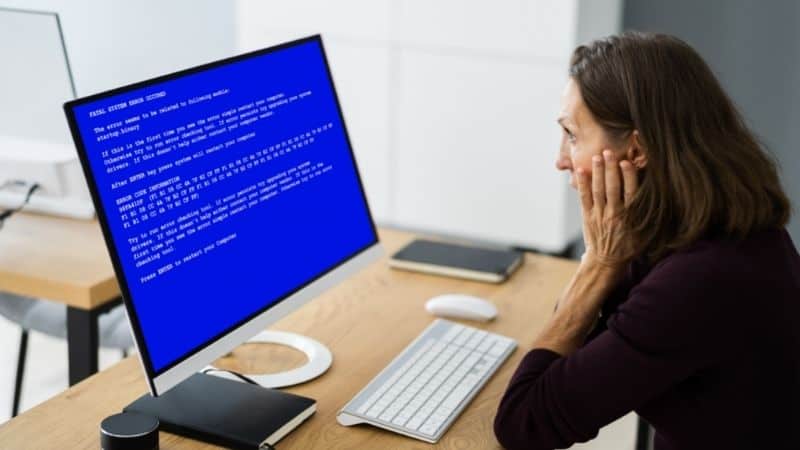How To Fix The “SYSTEM THREAD EXCEPTION NOT HANDLED” BSOD Stop Code In Windows 10

Table of Contents
A BSOD Stop Code Is a Critical System Error that can be caused by many different issues. If you come across an error like this, it can be very concerning.
But does it mean that your PC is completely broken? Is there any way to fix it? If you’re wondering these questions right now – don’t panic! We’re here to help you with it.
If you find yourself experiencing this error, then it’s very possible that your system has been compromised or infected with malware.
The guide below is going to take you through a few different scenarios so that you can get your PC working again.
We’re going to be taking a look at how to fix the “SYSTEM THREAD EXCEPTION” stop code in Windows 10.
What Causes This Stop Code?
The most common cause of the “SYSTEM_THREAD_EXCEPTION_NOT_HANDLED” stop code is when an application or service tries to access a file on disk while another process is accessing that same file.
In other words, if one process is trying to read from or write to a file at the same time as another process is also doing so, then there could be a conflict between them.
The result would be an exception being thrown (which we call a crash), which causes the operating system to immediately terminate the offending program.
Step
Use Mutexes
To prevent this kind of issue from happening in the first place, you should make sure that all applications are using their own dedicated files for storing data instead of sharing resources with each other.
For example, if you have two programs running at once, they might both want to use the same database file. That means that they will try to open the same file at the same time, causing a conflict.
You should also avoid having multiple instances of the same program run at once.
If you do have more than one instance of the same program running, then they may end up trying to access the same resource simultaneously.
That said, if you really need to share resources among several processes, then you should ensure that only one instance of the program is running at a time.
You can do this by either:
-
- Using Mutexes to lock out other processes from accessing the shared resources until the current process finishes its work.
- Running multiple copies of the program at the same time but ensuring that they never interact with each other.
How To Fix This BSOD Code?
So, what exactly happens when this stop code occurs?
Well, the first thing that happens is that the OS terminates the offending process.
Thereafter, it looks to see whether there are any remaining processes that still require termination. If there aren’t any left, then the OS will restart the computer.
However, if there are still some processes left that haven’t yet been terminated, then the OS will wait for those processes to finish before continuing.
Once they’ve finished, the OS will start terminating the rest of the processes. This is why it’s important to keep your system clean and free of malware.
Step
Remove threats
If you have any lingering infections, then they’ll continue to hog resources and prevent the rest of the system from functioning properly.
It’s best to remove these threats as soon as you notice them.
If you’re unsure about the source of the problem, then you should always perform a full scan of your system with a reputable anti-malware tool like Malwarebytes Anti-Malware.
It’s also possible that there is an issue with your drivers, if you suspect this might be the case, then you may have to fix your drivers.
Step
Download latest driver from manufacturer’s website
When it comes to resolving the problem with your drivers, you should be able to find a solution online.
However, sometimes, even though you think you have the latest version installed, you may actually have an older version.
In such cases, you should download the latest driver directly from the manufacturer’s website.
In most cases, you won’t have to worry too much about installing the right version of the driver manually.
Most modern operating systems come with built-in tools that automatically detect which versions of devices are compatible with your system.
For example, Microsoft has a tool called Device Manager that allows you to easily identify the hardware components on your PC.
You can then click on the component to view information about it.
If you would like to know more about how to use Device Manager, then check out our guide here.
Final Thoughts
We hope that this guide has given you some ways to try and deal with the “System Thread Exception Not Handled” error message.
When trying to fix your PC, always remember to back up all of your data so that you don’t lose anything. Also, make sure you run regular scans with a reputable security software tool.
These things will help reduce the chance of your PC being infected with malware.
